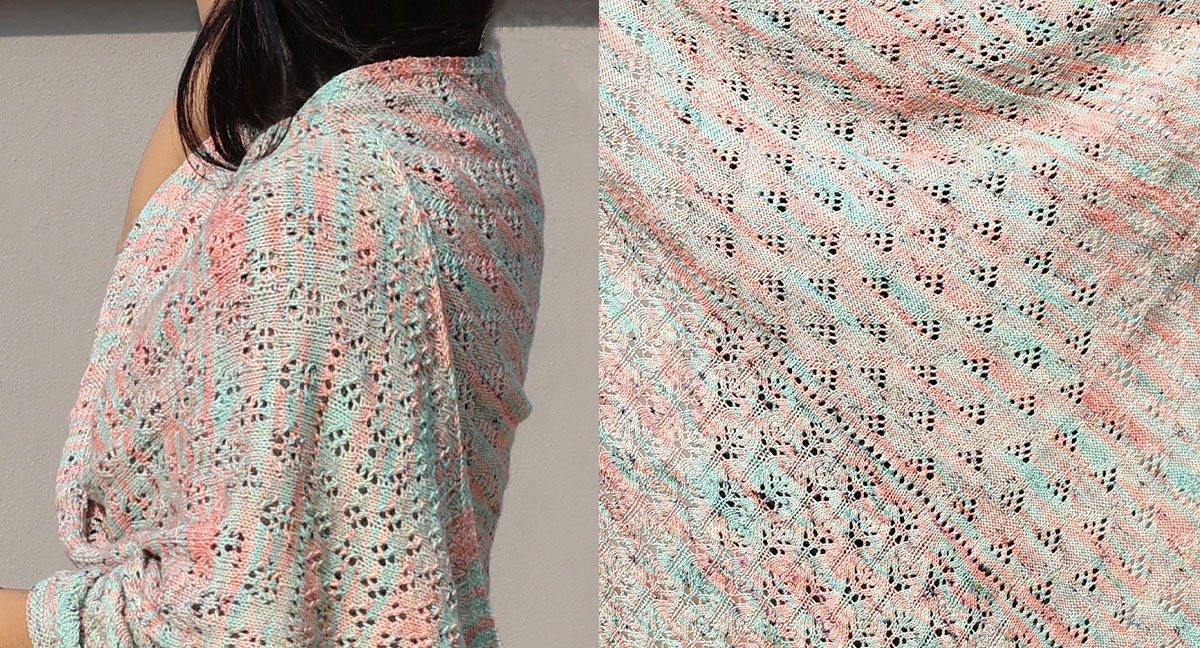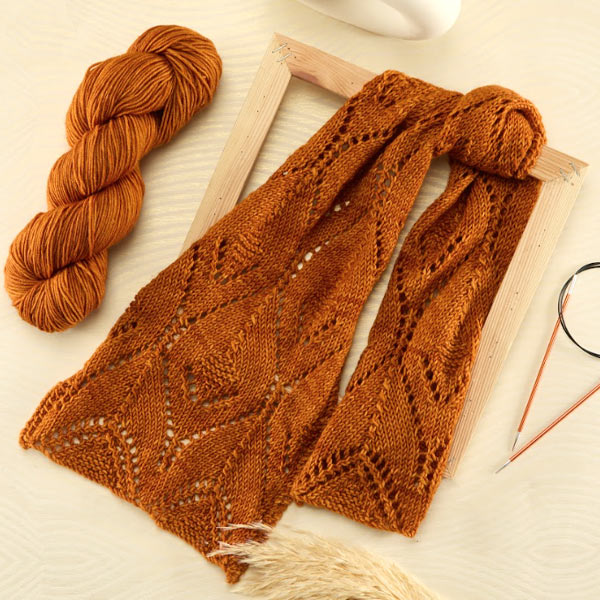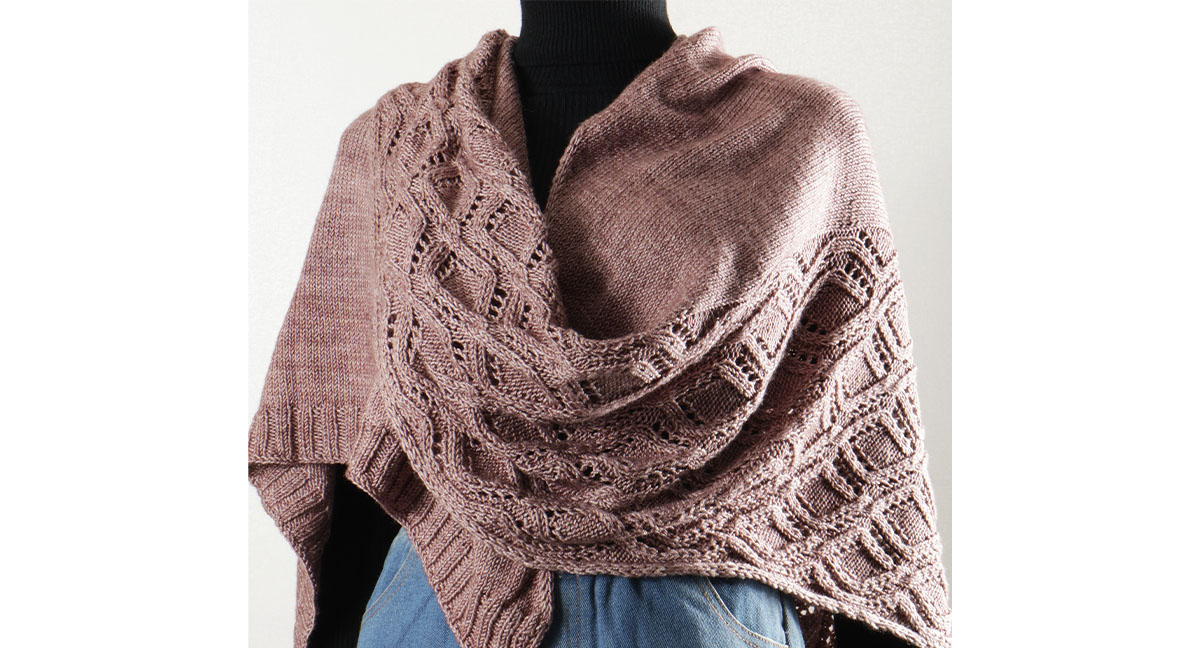Guide to Knitting Lace with Hand-Dyed Yarn
- Blog Views : 942
- Symfonie Yarns
- 17Jun, 2025

Are you a fan of lace knitting patterns? Also, do you admire hand-dyed yarns? You can combine the love and passion for both by knitting lace with hand-dyed yarn. The experience is thrilling, unpredictable, and full of color-drama. One wrong move, and you're frogging back three rows with nothing but regrets and tangled passion. There's something truly enchanting about lace patterns, especially when they are created from beautiful hand-dyed yarn skeins. Delicate stitches and vibrant color variations create pieces that are wearable works of art. If you've been curious about combining these two beloved aspects of knitting, you're in for a treat. We have the guide to begin the adventure.
In this blog, we’ll cover:
- Why Hand-Dyed Yarn is perfect for lace knitting
- Choosing the right yarn for lace knitting patterns
- Essential Tips for Success
- Getting Started: Your First Project
Why Hand-Dyed Yarn is Perfect for Lace Knitting
Hand-dyed yarn brings a unique dimension to any project; however, with lace, the subtle color shifts and variations in yarn skeins are perfect. Choose any yarn skein and create depth and movement within lace patterns, making each stitch opening a window to showcase different hues. Also, as generally feared, variegated yarns do not compete with intricate stitch patterns; quality hand-dyed yarns typically feature gentle transitions that complement rather than overwhelm delicate lacework. The artisanal nature of both the yarn and the lace pattern creates a harmonious marriage of craftsmanship.
Also read- Understanding Variegated vs. Semi-Solid Hand-Dyed Yarn

Choosing the Perfect Yarn for Your Lace Project
Not all hand-dyed yarns are created equal when it comes to lace knitting. Here's what to look for:
- Fiber Content: Natural fibers like merino wool, silk, and alpaca work beautifully for lace, as they have excellent drape and blocking properties. Merino-silk yarn blends are particularly stunning, as they add a subtle sheen that enhances both the stitch definition and color depth. Merino-polyamide is a good choice as the yarn blend is soft and durable. Polyamide brings stretchiness.
- Weight Matters: Lace and fingering weight yarns are traditional choices, but don't overlook other options for more substantial pieces. The key is ensuring your yarn weight complements your pattern's intended drape and structure. You can choose the versatile DK weight yarn and pair it with a bigger needle size than recommended, as is the case with worsted-weight yarn that can also create lace.
Also read: Yarn Weight Guide: All Your Questions Answered
- Color Consideration: Vibrant shades, classic neutrals, or delicate pastel shades of hand-dyed yarns are gorgeous for intricate stitch details. For your first lace project with hand-dyed yarn, consider semi-solid or gently variegated colorways that shift through related tones.

Essential Tips for Success
Working with hand-dyed yarn in lace patterns requires some special considerations:
- Always Use a Lifeline: Hand-dyed yarn can sometimes make it challenging to see individual stitches clearly, especially in darker colorways. A lifeline every few rows can save hours of frustration if you need to rip back. You can use yarn, thread or dental floss and thread it through the lifeline holes that KnitPro interchangeable circular needles possess. Refer to our blog on adding a lifeline to mindful knitting.
- Block Generously: Hand-dyed yarns often bloom beautifully when blocked, and lace patterns absolutely require proper blocking to show their true beauty. Don't skip this crucial step – it's where the magic truly happens.
Also read: The Art of Blocking: How to Finish Projects Made with Hand-Dyed Yarns
- Embrace Imperfection: Part of the charm of working with hand-dyed yarn is accepting that each skein is unique. Small variations in dye uptake or color intensity add character to your finished piece.
Getting Started: Your First Project
If you're new to combining lace and hand-dyed yarn, start with a simple rectangular shawl or scarf. Choose a semi-solid or gently variegated colorway in a fiber you're comfortable working with. This combination allows you to focus on the lace technique while enjoying the visual interest that hand-dyed yarn provides.
Lace knitting is based on certain aesthetic holes in the knitted pattern. Place in the middle of garter (all rows of knit stitches) or stockinette ( alternate rows of knit and purl stitches) lace patterns are crated with yarn over (yo) to create intentional holes essential for lace's openwork effect. Next are decrease stitches that range from k2tog to central decreases. These stitches are the building blocks for beautiful lace patterns in any knitting project.
The combination of traditional lace techniques with the artisanal beauty of hand-dyed yarn represents knitting at its finest. Whether you're creating an heirloom shawl or a every day accessory, this pairing ensures your finished piece will be truly one-of-a-kind. Ready to start your own lace and hand-dyed yarn journey? Explore Symfonie Yarns’ collection for hand-dyeding artistry as its best along with OEKO Tex 100 certification that ensures 350+ tests and free from harmful levels and substances making it safe to use to next to skin, baby garments and more.
-
- 29 Oct,2025
-
- 24 Oct,2025
-
- 14 Oct,2025
-
- 10 Oct,2025
-
- 06 Oct,2025
-
- 01 Oct,2025
Copyright © Symfonie Yarns 2025 - all rights reserved | RSS Feed
